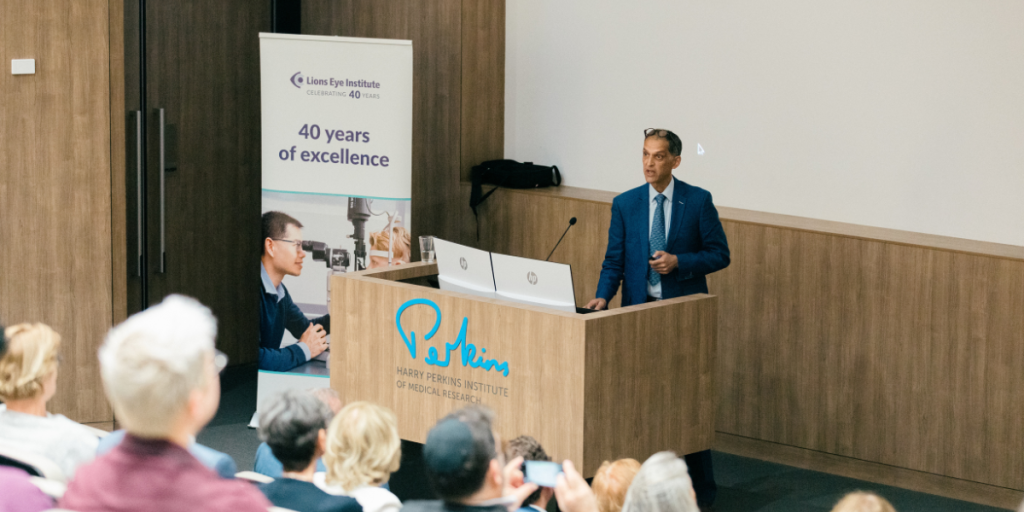Pushing the boundaries of retinal treatments and how we got there: A lecture by Professor Lyndon da Cruz

Retinal disease is one of the leading causes of blindness across all age groups, making the development of new therapies and treatments a global priority. On Wednesday, 16 April 2025, Professor Lyndon da Cruz—one of the world’s foremost experts in retinal surgery and innovation—delivered an inspiring lecture to a room of researchers and students from the Lions Eye Institute and Forrest Research Foundation.
Drawing from over 30 years of experience, Professor da Cruz shared highlights from his groundbreaking work in retinal research, particularly his contributions to advancing stem cell-based therapies. Through interdisciplinary collaborations, he has pioneered medical and technological innovations that are shaping the future of ophthalmology.
The lecture walked attendees through the critical stages of developing a new retinal treatment, including:
-
Target disease – Identifying what needs to be and can be treated
-
Cell source – Finding the right stem cell source from which therapeutic cells can be derived
-
Cell differentiation – Establishing protocols to differentiate the cells required for treatment from the stem cell
-
Delivery method – Developing safe and effective delivery systems to transplant the cells into the correct place
-
Efficacy – Demonstrating that the treatment works
A key highlight was the successful use of a retinal pigment epithelium cell layer, made from human stem cells, to treat a particular type of retinal condition. This layer is transplanted as a “patch” that consists of the cells placed on a supportive membrane and transplanted into a patient’s eye and monitored over the next five years. Professor da Cruz also discussed the use of robotic surgery in the precise delivery of such therapeutics, including a cutting-edge concentric tube robot that allows the creation of a micro-wrist for enhanced flexibility inside the eye.
Looking ahead, he emphasised the transformative role of MedTech especially machine learning and Al-powered medical imaging in diagnosing and treating retinal diseases. He closed with an uplifting message, encouraging attendees to stay curious, collaborate across disciplines, and continue learning and exploring the world.
This lecture was made possible by the generous support of the Forrest Research Foundation, whose continued investment has drawn exceptional talent to Western Australia. Through partnerships with leading institutions, they have fostered an interdisciplinary community driving innovation across fields from mentorship to meteorites.
Watch highlights from the lecture below.



